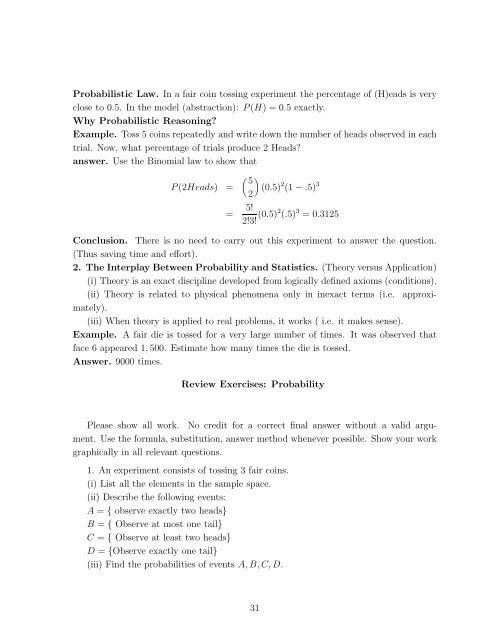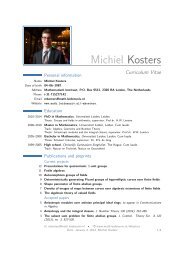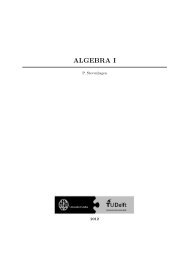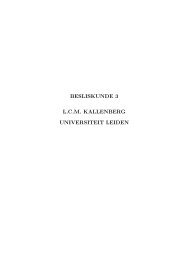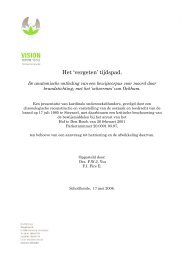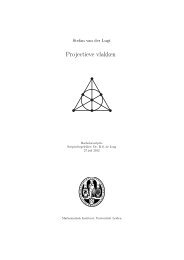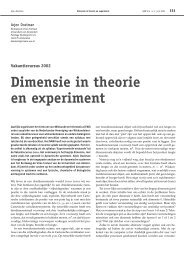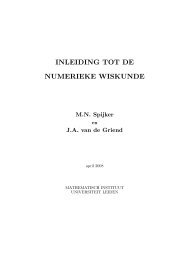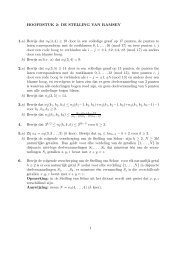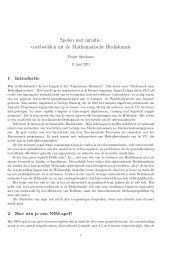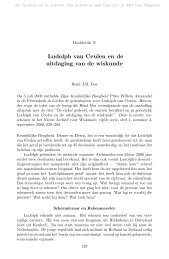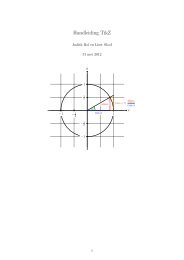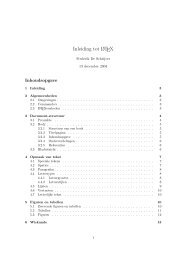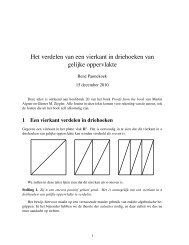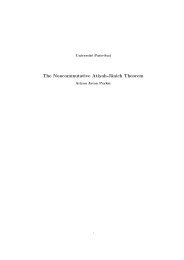MBA 604 Introduction Probaility and Statistics Lecture Notes
MBA 604 Introduction Probaility and Statistics Lecture Notes
MBA 604 Introduction Probaility and Statistics Lecture Notes
Create successful ePaper yourself
Turn your PDF publications into a flip-book with our unique Google optimized e-Paper software.
Probabilistic Law. In a fair coin tossing experiment the percentage of (H)eads is very<br />
close to 0.5. In the model (abstraction): P (H) =0.5 exactly.<br />
Why Probabilistic Reasoning?<br />
Example. Toss 5 coins repeatedly <strong>and</strong> write down the number of heads observed in each<br />
trial. Now, what percentage of trials produce 2 Heads?<br />
answer. Use the Binomial law to show that<br />
<br />
5<br />
P (2Heads) = (0.5)<br />
2<br />
2 (1 − .5) 3<br />
= 5!<br />
2!3! (0.5)2 (.5) 3 =0.3125<br />
Conclusion. There is no need to carry out this experiment to answer the question.<br />
(Thus saving time <strong>and</strong> effort).<br />
2. The Interplay Between Probability <strong>and</strong> <strong>Statistics</strong>. (Theory versus Application)<br />
(i) Theory is an exact discipline developed from logically defined axioms (conditions).<br />
(ii) Theory is related to physical phenomena only in inexact terms (i.e. approximately).<br />
(iii) When theory is applied to real problems, it works ( i.e. it makes sense).<br />
Example. A fair die is tossed for a very large number of times. It was observed that<br />
face 6 appeared 1, 500. Estimate how many times the die is tossed.<br />
Answer. 9000 times.<br />
Review Exercises: Probability<br />
Please show all work. No credit for a correct final answer without a valid argument.<br />
Use the formula, substitution, answer method whenever possible. Show your work<br />
graphically in all relevant questions.<br />
1. An experiment consists of tossing 3 fair coins.<br />
(i) List all the elements in the sample space.<br />
(ii) Describe the following events:<br />
A = { observe exactly two heads}<br />
B = { Observeatmostonetail}<br />
C = { Observe at least two heads}<br />
D = {Observe exactly one tail}<br />
(iii) Find the probabilities of events A, B, C, D.<br />
31


